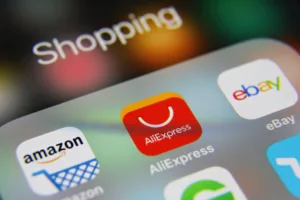By Lizzie Tearle, Client Services Director, 26
In today’s competitive business landscape, credibility plays an important role in the success of marketing campaigns. It encompasses the trust, reputation and authenticity associated with a brand.
It’s vital for companies to guarantee that their advertising lands in a credible, brand-safe place that targets the right people at the right time. Consequently, brands spend significant amounts on digital advertising to ensure their adverts are seen by actual humans and alongside content that is appropriate. After all, no organisation wants their high-spend advertising to appear next to a damaging tabloid article.
Building and maintaining credibility in your marketing campaigns is crucial for attracting customers, fostering loyalty, and differentiating from competitors. But the way that credibility is achieved is going to shift significantly in the cookie-less world we’re about to enter.
Getting your hands dirty in a cookieless world
If I think back to when I started working in paid media, less then ten years ago, it was a very different scene. Pre GDPR, with the power of third-party cookies and reams of data available, many marketers were agnostic towards the publications they were advertising in.
With cookies dissolving, times have changed, we’re all looking to find the best solution. Depending on which supplier you speak to, it’s almost a full 180. There’s no denying that cookies made things easier for marketers, but their removal shouldn’t necessarily be seen as a bad thing. Instead, it presents new opportunities to raise the credibility of your business and target your key demographics more carefully.
That means having a human approach to planning and targeting is more important than ever.
If you were to simply input your budget into a Demand Side Platform (DSP) algorithm, then most likely 75% of your spend would be dedicated to tabloid newspapers – as that’s where the most eyeballs are. But that might not be what is necessarily best for your brand to establish trust and credibility.
You have to get your hands dirty when tactical planning if you want to be seen in more specific, premium, trusted and salient publications. Algorithms can be amazing and definitely speed things up, but you need to add your own guide ropes when planning a campaign. This means potentially introducing quotas as to the quality of your target publications, so they are directly targeting your desired demographic and audience, not just the average Joe.
Not only does this improve the likelihood of capturing the attention of your desired customers, it also increases your brand safety credentials by devoting a specific amount of impression share to credible publications.
Safety first!
There’s no denying that the world has gotten murkier when it comes to advertising and trust. There’s a gigantic spectrum of advertising, ranging from pre-roll YouTube adverts to influencer gifted posts and advertorial articles in newspapers, each with differing levels of clarity as to whether they are an advert.
It’s the responsibility of the publisher, the brand, and the agency to ensure ads are clearly signposted. For businesses in particular, ensuring you’re being overt about when content is an advert is critical in maintaining that trust with your customer.
We’ve seen recently, particularly with influencers (most recently with Grace Beverley and her TALA brand) the backlash that can occur when adverts aren’t properly disclosed – especially when they target vulnerable customers that are more easily influenced.
And that’s exactly why brand safety needs to be an integral part of any media plan, with a specific part of the advertising budget allocated to it. Whether this be using a third-party verification partner, ensuring there is no ad fraud and invalid traffic, or vetting your advertising process, every brand should have their own hygiene rulebook that they follow when advertising.
Don’t get me wrong, it takes guts to adopt a safety-first approach as most businesses want to buy media as cheaply as possible, but the recent work of package-holiday company Holiday Best demonstrates that adopting this method pays off.
By only appearing in credible environments such as BBC Good Food, Radio Times, Top Gear and Magic FM they’ve been able to cut through the noise to meet families who trust the big travel names and make them aware of Holiday Best as an alternative.
And it’s worked with a huge 1.5% click through rate from our skins with Holiday Best, with an amazing 81% MRC rated viewability.
As demonstrated, by applying these safety metrics to your advertising campaigns, you can not only stand out in a competitive market but also build a positive reputation that resonates with your target audience.
With trust as its backbone, a credible brand can communicate its value proposition, differentiate itself from competitors and reduce the perceived risk from a consumer’s perspective. Ultimately, that’s what will ensure your advertising is effective not just now, but in the long-run.









